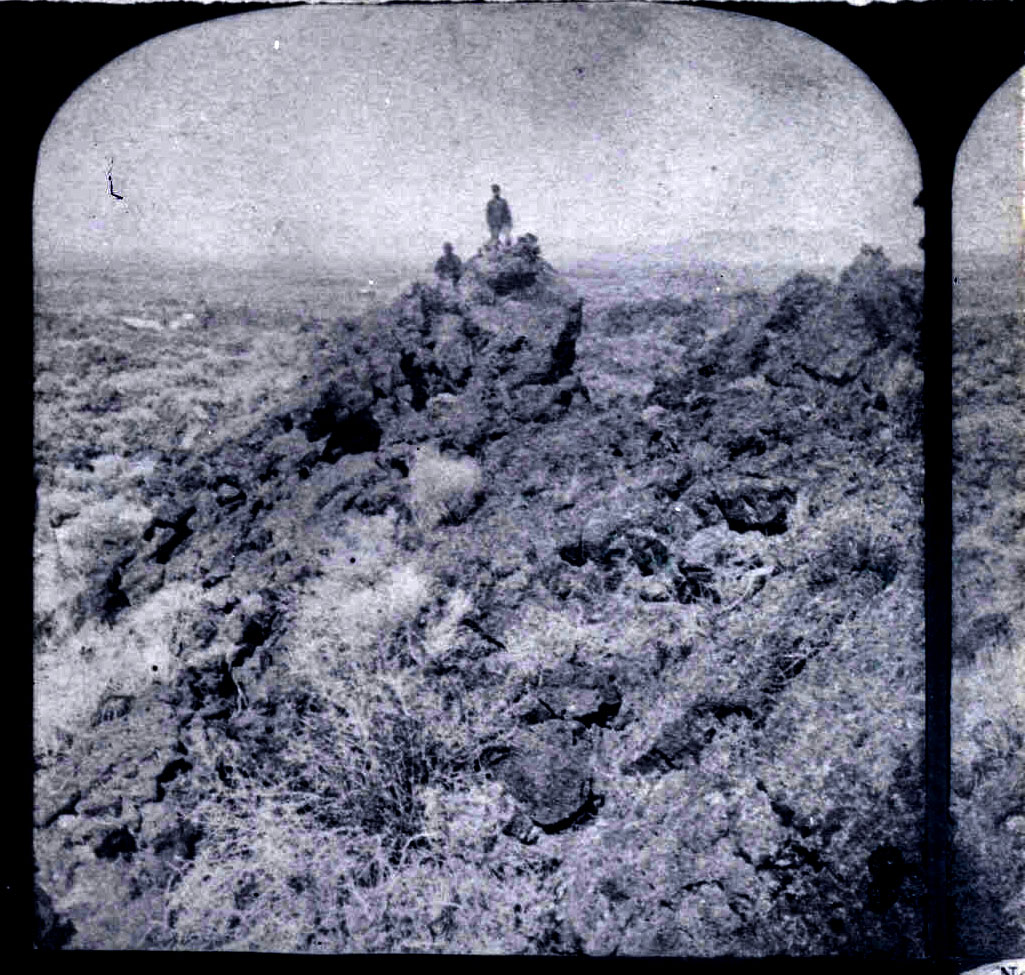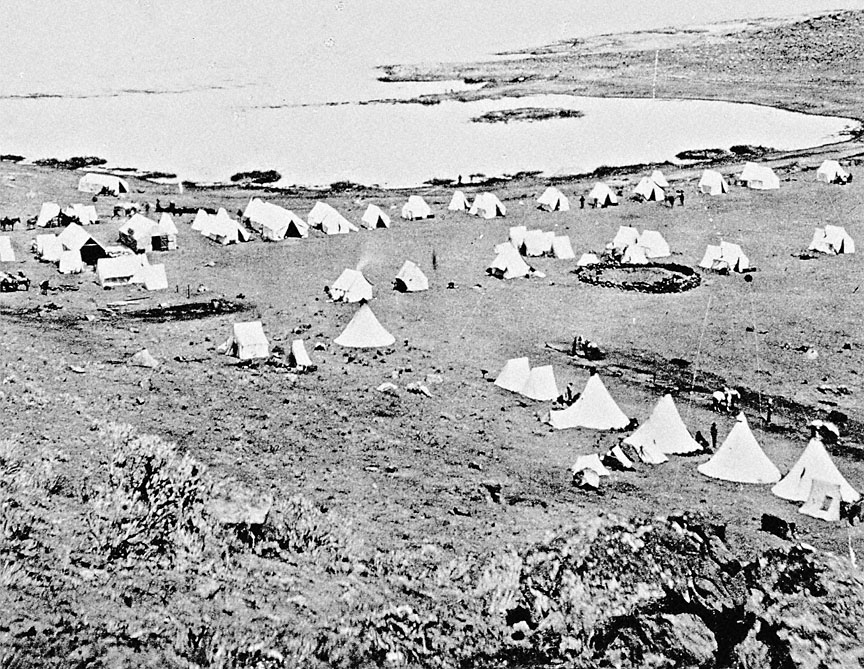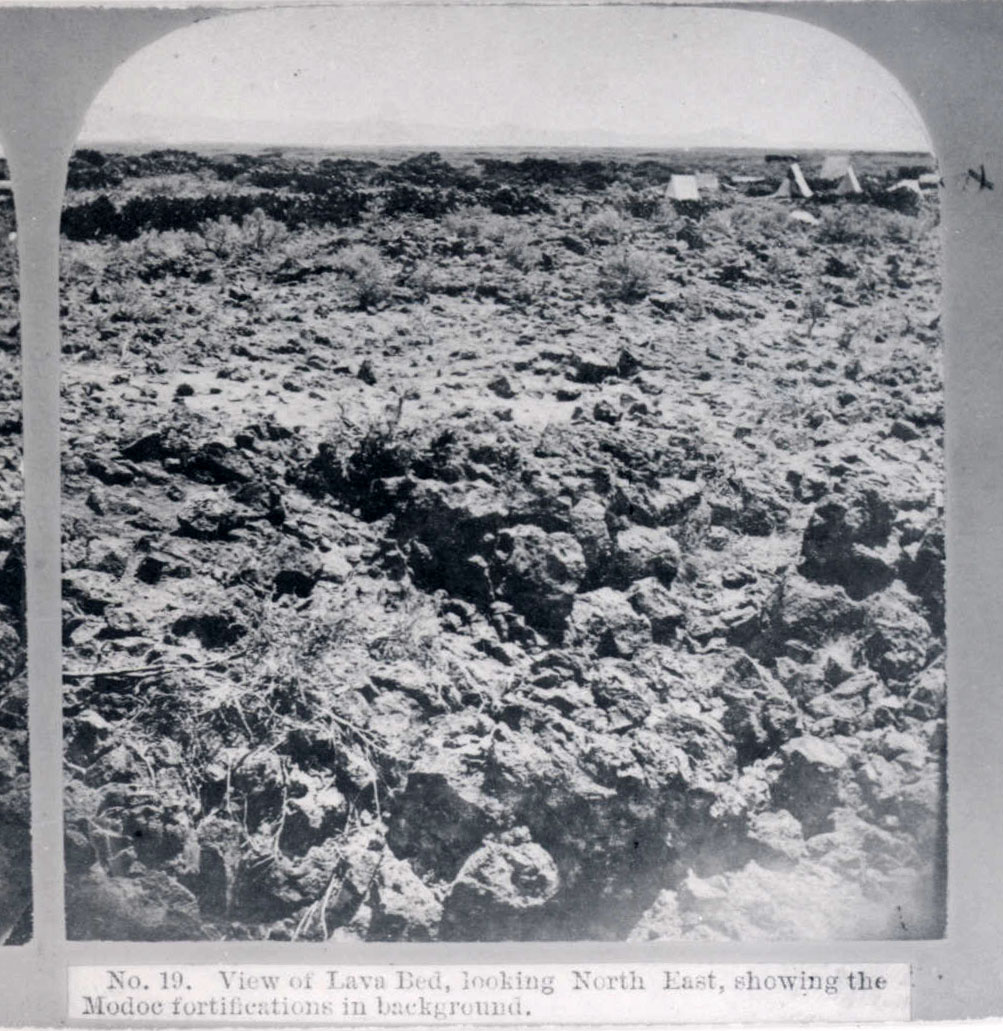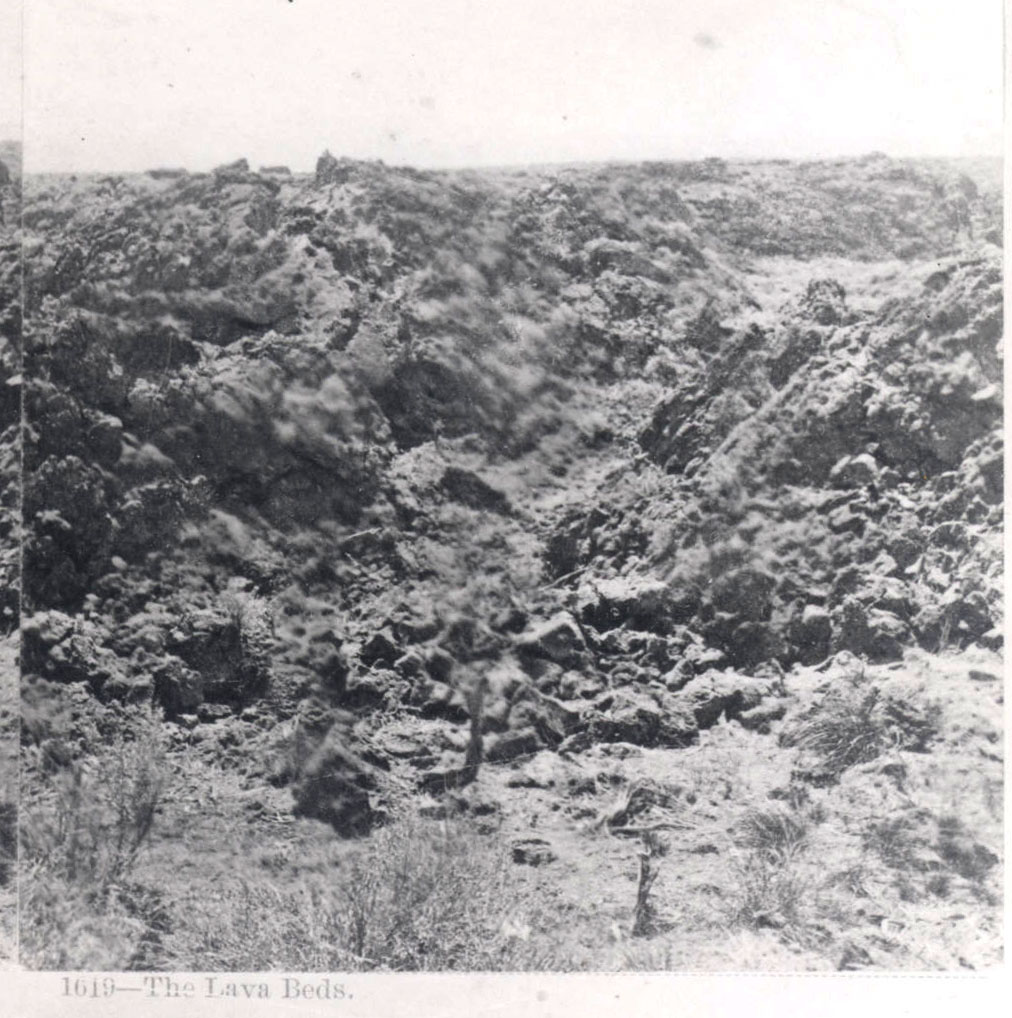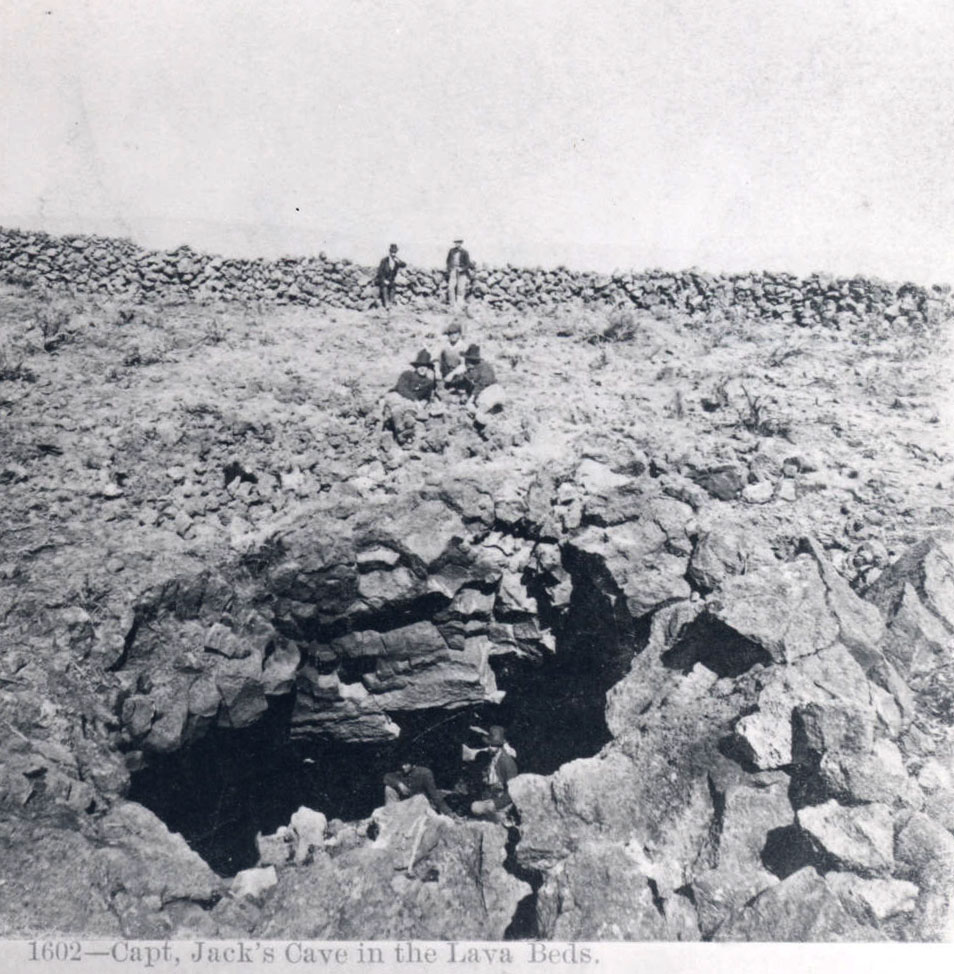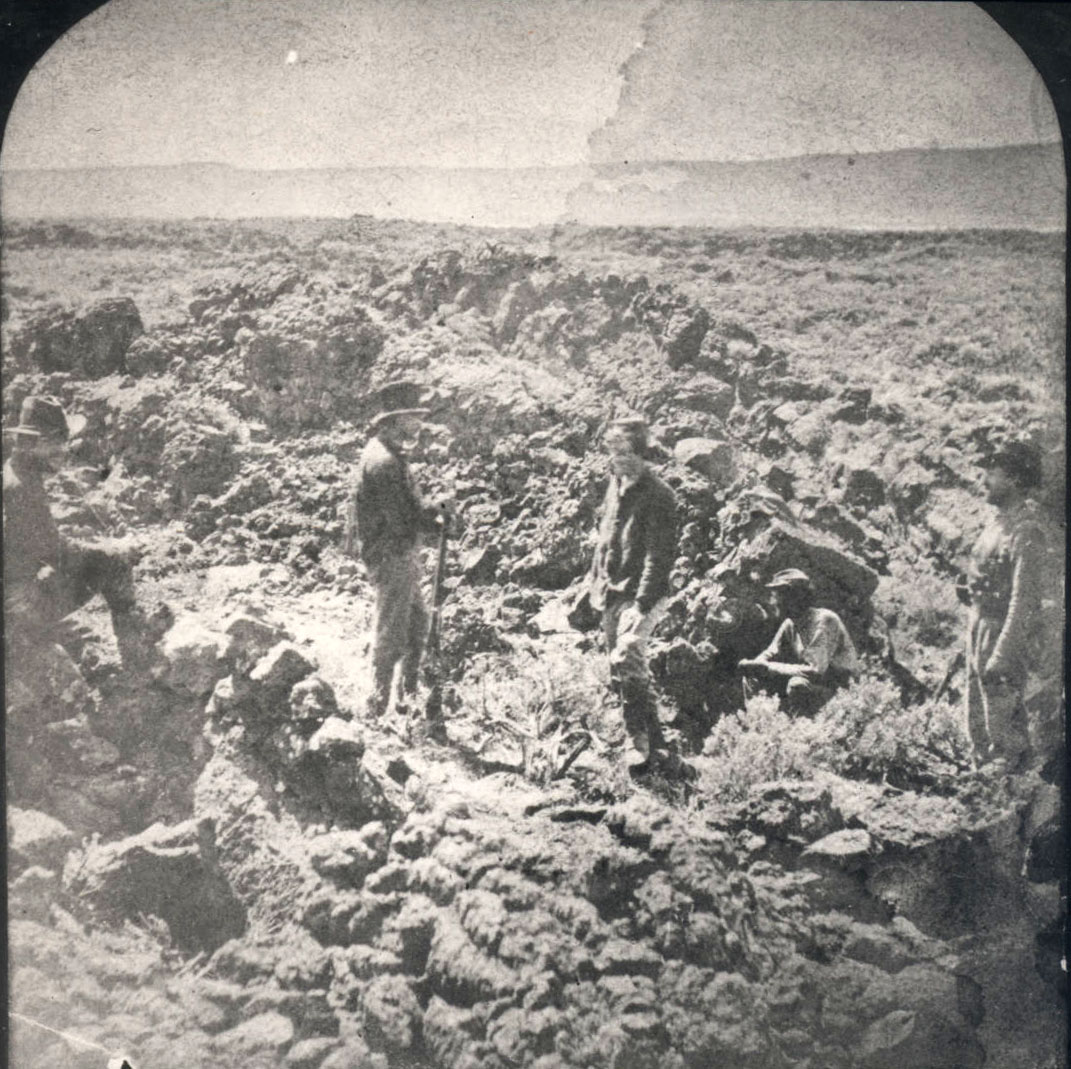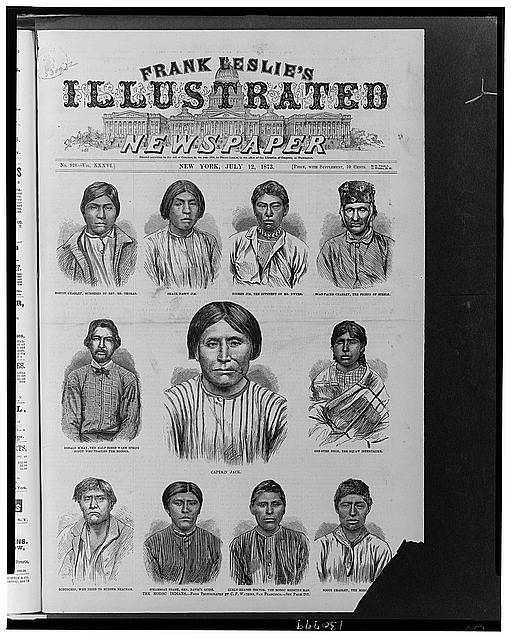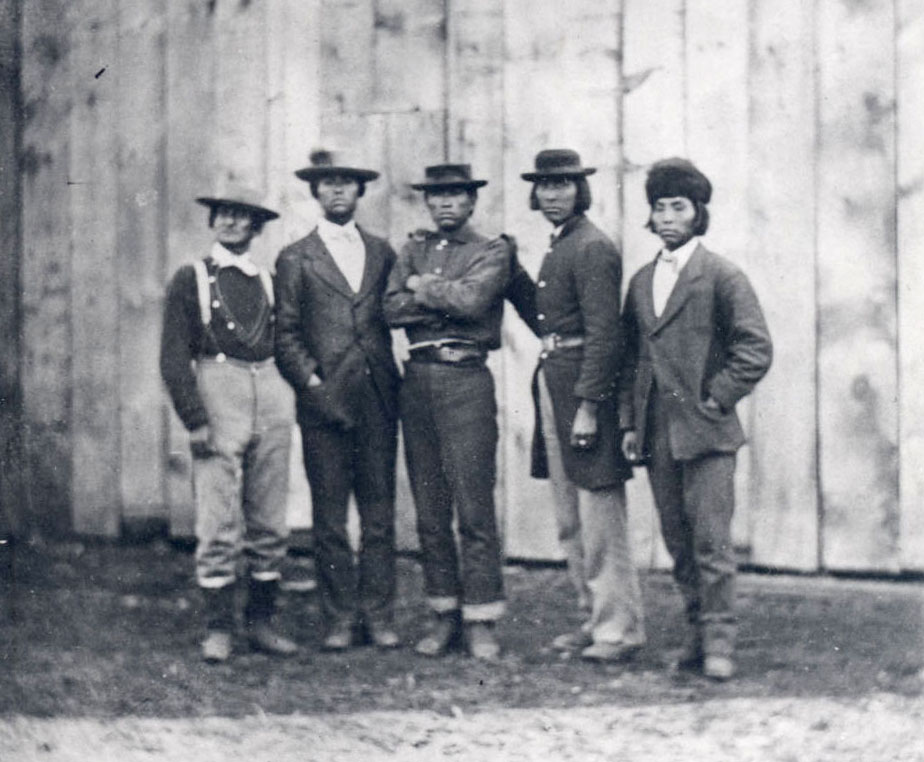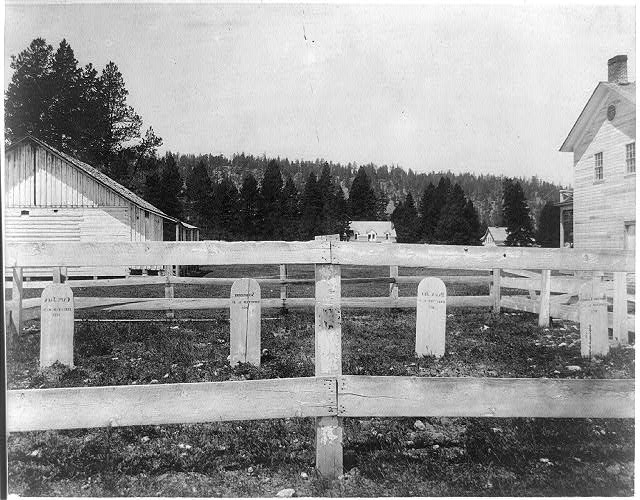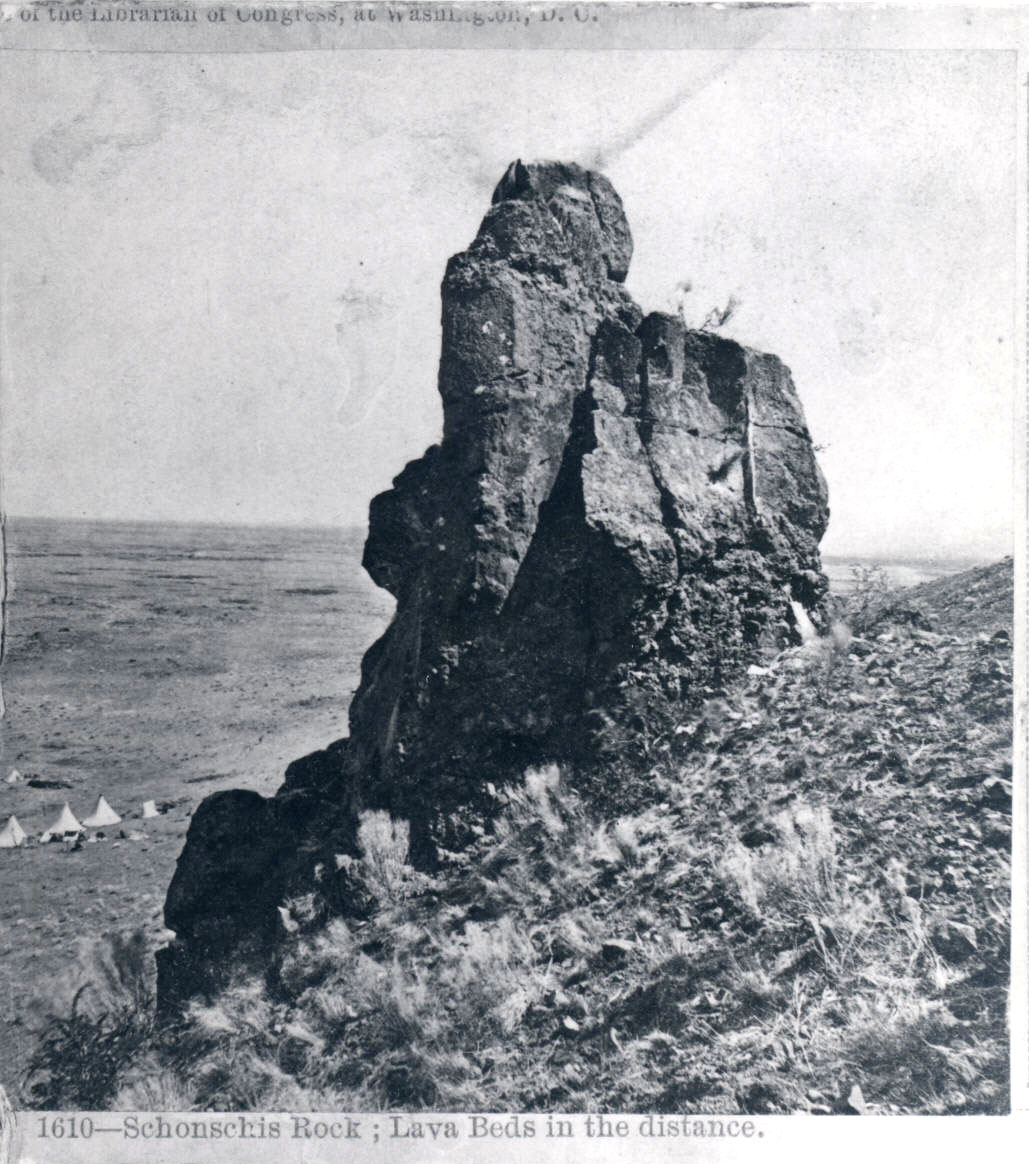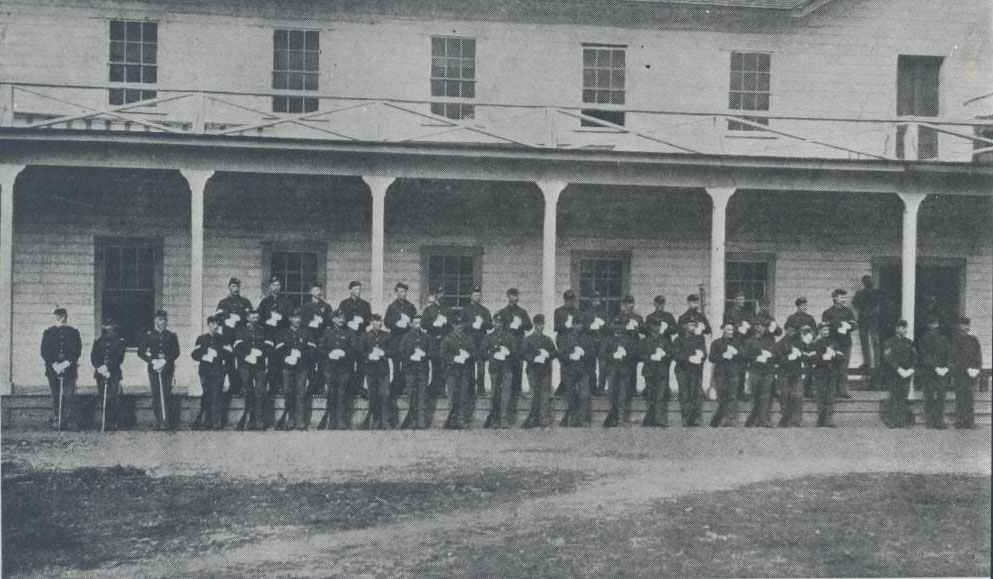The Modoc War, waged mostly over the winter and spring of 1872-1873, thrust the border between Oregon and California into the national spotlight. During peace negotiations, General E.R.S. Canby was killed, the first full-ranking U.S. Army general to lose his life in a conflict between Indians and the federal government. The resulting furor brought about another first, as the Indian leaders of the war were tried and executed for war crimes.
This war also claimed the distinction of being the most expensive hostile engagement against Native Americans undertaken by the United States to that time. Much of the direct cost of about $420,000 could be attributed to the U.S. Army moving troops and supplies in remote country during the winter. Roads were primitive, and railheads were more than a hundred miles distant. The nearest town to the conflict was Linkville (present-day Klamath Falls), which had only a dozen buildings in 1872. From their stronghold in the Lava Beds in northern California (called Ktai' Tala by the Modocs), the modest fighting force of Indian combatants could thus fend off its opponent, even though the number of U.S. troops was several times greater.
In 1864, the leaders of the Klamath, Modoc, and northern Paiute people had signed a treaty with the United States that ceded Indian lands in return for a reservation east of the Cascades on what had largely been Klamath territory. While roughly half the Modoc people elected to live on the reservation, many wanted to live in their home territory on the Lost River in and around what later became Merrill. Cavalry troops at Fort Klamath were dispatched to forcibly return them to the reservation.
The fighting began in Oregon near the Lost River, where a group of Modocs led by Kintpuash (also known as Captain Jack) had camped on November 29, 1872. There were casualties on both sides, and the Modocs retreated across Tule (Rhett) Lake to the rugged and inhospitable Lava Beds, where they spent the next four months. Both sides monitored each other's movements until January 17, when the army attacked from two sides. With fewer than sixty warriors, the Modocs easily repulsed a force six times its size, leaving the army with twelve dead and thirty-seven wounded that day.
The humiliating defeat led Secretary of War William Belknap to suspend hostilities on January 30 so that a peace commission could try to end the conflict. Talks between the Modocs and the commission stalled for two months, so Canby began moving reinforcements and firepower closer to Modoc positions in an attempt to force Kientpoos to the bargaining table. On April 11, during a truce, eight Modocs killed Canby and Reverend Eleaser Thomas, one of the peace commissioners. The conflict and Canby’s death quickly became national news. Several days later, with their mortars finally in place, U.S. soldiers captured the Modocs’ strongholds in the Lava Beds, although most of the Modocs had escaped during the night.
On April 26, the Modocs ambushed and destroyed a U.S. Army patrol conducting reconnaissance. Only one Modoc died, as compared with the army's twenty-four killed and nineteen wounded. Just two weeks later, the battle of Dry (Sorass) Lake, also known as the Battle of Sand Butte, proved to be decisive. The soldiers prevailed once they counterattacked, so that the Modocs retreated and scattered.
By mid June 1873, the U.S. Army had transported 156 Modoc captives from a camp near present-day Newell, California, to Fort Klamath. Kientpoos and three other leaders were hanged at the fort in October after a perfunctory trial for war crimes that focused on the killings of General Canby and Reverend Thomas. A military commission tried six Modocs: Captain Jack, Schonchin John, Black Jim, Boston Charley, Slolux, and Barncho. The remaining captives were herded onto rail cars and taken to a reservation in the northeastern corner of what is now Oklahoma. By 1909, when the exiles were allowed to return to Oregon, only seventeen of the original number were alive. Some of them and their descendants stayed behind, where they formed the Modoc Tribe of Oklahoma.
Apart from the fate of the Modoc captives, the most striking result from the war was that federal policymakers learned so little from it. Other Indian conflicts followed during the 1870s, including the Nez Perce War of 1877, which also started in Oregon. The two wars had a number of things in common, including the removal of native people from parts of the state coveted by settlers—but in a fashion more dramatic than the far greater number of deaths from disease outbreaks or the forced exodus that resulted from treaties executed in the mid nineteenth century.
-
![]()
Medicine Flag Rock, edge of the Modoc stronghold, 1873.
Courtesy Oregon Hist. Soc. Research Lib., 016184
-
![Eadweard Muybridge recorded the final stages of the Modoc War in 1873 with this photograph of Gillem’s Army Camp at Tule Lake, California.]()
Gillem's Army Camp, 1873.
Eadweard Muybridge recorded the final stages of the Modoc War in 1873 with this photograph of Gillem’s Army Camp at Tule Lake, California. Courtesy Oreg. Hist. Soc. Research Library, OrHi399
-
![This hand-drawn map of the site of the Modoc War was made by an unknown person. Both landmarks and army camp sites have been identified, including the Modoc stronghold and Gen. Gillem's camp.]()
Seat of the Modoc War, 1873 (?) .
This hand-drawn map of the site of the Modoc War was made by an unknown person. Both landmarks and army camp sites have been identified, including the Modoc stronghold and Gen. Gillem's camp. Courtesy Oreg. Hist. Soc. Research Library, bb011916
-
![Kintpuash (also spelled Keintpoos, Keiintoposes), better known as Captain Jack, was a Modoc Indian chief during the 1860s and early 1870s.]()
Kintpuash (Captain Jack), 1873.
Kintpuash (also spelled Keintpoos, Keiintoposes), better known as Captain Jack, was a Modoc Indian chief during the 1860s and early 1870s. Courtesy Oreg. Hist. Soc. Research Library, OrHi4357
-
![]()
Modoc fortifications in lava beds, c.1873.
Courtesy Oregon Hist. Soc. Research Lib., 016180
-
![]()
Site of the final battlefield in the lava beds, Modoc War, 1873.
Courtesy Oregon Hist. Soc. Research Lib., 016808
-
![]()
Captain Jack's cave, lava beds, 1873.
Courtesy Oregon Hist. Soc. Research Lib., 016801
-
![]()
Shacknasty Jim's camp in the Lava Beds, 1873.
Oregon Historical Society Research Library, 016806
-
![]()
U.S. soldiers on the Lava Beds, looking west, 1873.
Oregon Historical Society Research Library, Orhi26544
-
![The sketches were based on photographs by Carleton Watkins.]()
Sketches of Modocs who became federal prisoners after the war, Frank Leslie's Illustrated Newspaper, 1873.
The sketches were based on photographs by Carleton Watkins. Courtesy Library of Congress, LC-USZ62-130779 -
![Scarface Charley, James Long, Bogus Charley, Shacknasty Jim, Hooker Jim]()
Modoc prisoners, c. 1873.
Scarface Charley, James Long, Bogus Charley, Shacknasty Jim, Hooker Jim Oregon Historical Society Research Library, 016549
-
![Fort Klamath, Modoc gravesite, 1894]()
Fort Klamath, Modoc gravesite, 1894.
Fort Klamath, Modoc gravesite, 1894 Courtesy Library of Congress, LC-USZ6
-
![]()
Schonschis Rock, with Tule Lake and Lava Beds in the distance, 1873.
Oregon Historical Society Research Library, 016804
Related Entries
-
![Fort Klamath]()
Fort Klamath
During the Civil War era, tens of thousands of people immigrated to the…
-
![Kintpuash (Captain Jack) (c. 1837-1873)]()
Kintpuash (Captain Jack) (c. 1837-1873)
Kintpuash (Strikes the Water Brashly), also known as Captain Jack an…
Related Historical Records
Map This on the Oregon History WayFinder
The Oregon History Wayfinder is an interactive map that identifies significant places, people, and events in Oregon history.
Further Reading
Foster, Doug. "Imperfect Justice: The Modoc War Crimes Trial of 1873." Oregon Historical Quarterly 100:3 (Fall 1999): 246-87.
Horton, Kami. "150 years ago, the US military executed Modoc war leaders in Fort Klamath, Oregon." Oregon Public Broadcasting. October 3, 2023.
James, Cheewa. Modoc: The Tribe That Wouldn't Die. Happy Camp, California: Naturegraph, 2008.
McNally, Robert Aquinas. The Modoc War: A Story of Genocide at the Dawn of America's Gilded Age. Lincoln: University of Nebraska Press, 2017.
Murray, Keith A. The Modocs and Their War. Norman: University of Oklahoma Press, 1959.
Shaw Historical Library. Unforgiving Landscape: Lava Beds National Monument and the Modoc War. (Journal of the Shaw Historical Library, v. 23-24). Klamath Falls, Oregon: Oregon Institute of Technology, 2011.

